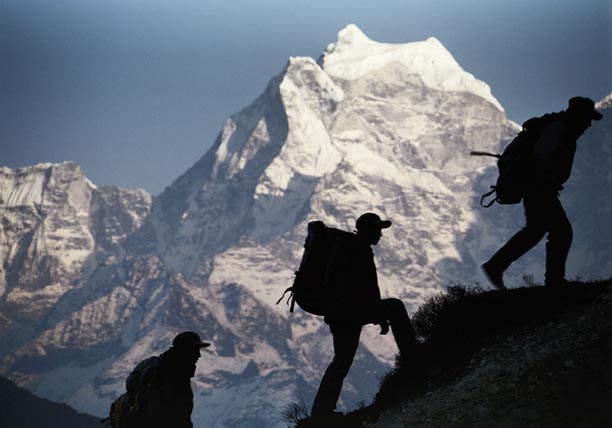

Less than half a century ago, Sir Edmund Hillary and Tenzing Norgay became the first humans to stand atop Mount Everest and gaze outward from the highest point on our planet. Since their historic ascent, scores of other climbing expeditions have attempted these forbidding heights and many have succeeded. But though she can be climbed, legend has it that "the Mother Goddess of the World" cannot be conquered.

During the climb, a blizzard struck and claimed eight lives, including two of the world's climbing expedition leaders. The world's attention was riveted on the rescue of several men and women who were trapped on the lethal, windswept slopes. Photographic history was made as Brashears and his team captured both the dramatic climb to the summit, and also documented for the publication Everest: Mountain without Mercy, the greatest tragedy to befall a climbing expedition.
 Everest shows
the spell-binding ascent of an international team of climbers who reached
the summit, and found hope, beauty and triumph in the wake of tragedy.
It also reveals how the mountain was formed and continues to evolve, and
how high altitudes challenge a climber's mental and physical abilities.
It shows as well how the mountain-climbing tradition of the local Sherpa
culture permeates the Everest experience.
Everest shows
the spell-binding ascent of an international team of climbers who reached
the summit, and found hope, beauty and triumph in the wake of tragedy.
It also reveals how the mountain was formed and continues to evolve, and
how high altitudes challenge a climber's mental and physical abilities.
It shows as well how the mountain-climbing tradition of the local Sherpa
culture permeates the Everest experience.
Producer Greg MacGillivray says of the film, "Great fictional films impart an emotional story of a life-and-death struggle. Our large format films, being nonfiction, have never before had that same urgency and poignancy. But with Everest we have these powerful story elements in a real, nonfiction film, photographed as it all happened in the most hyper-realistic format yet invented."
- Adapted from Everest: Mountain without Mercy
Everest opened nationwide at some 80 theaters in the spring of 1998, and is expected to be hailed as the most spectacular film ever made for the IMAX/OMNIMAX screen. Its run at Carnegie Science Center through December 10 will be a month longer than most Omnimax films in Pittsburgh.
For showtimes and information call 237-3400, or visit the Science Center website at www.csc.clpgh.org.
Available at the Discovery Store of Carnegie Science Center: Everest: Mountain without Mercy, by Broughton Coburn, the 1997 book published by the National Geographic Society; the Everest soundtrack (CD); and Everest (the video).
A MacGillivray Freeman Film. Sponsored in part by the Everest Film Network. Major funding provided by the National Science Foundation. National sponsor: Polartec.
Contents |
Highlights |
Calendar |
Back Issues |
Museums |